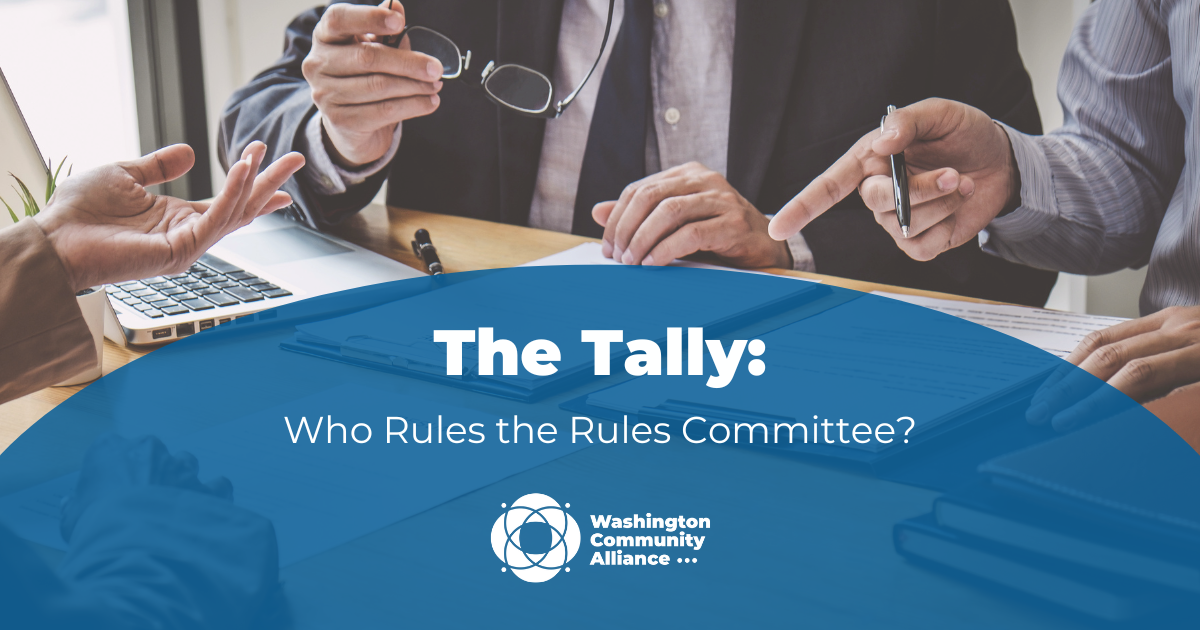
Friends–
Yesterday marked the final day to pass bills out of the chamber, House or Senate, they originated in. We’re happy to say that many of our Top Nine made it out of the House, so our focus will shift to the Senate.
Bills that didn’t make it past cut-off died in the Rules Committee, which determines bills make it to a floor vote. Surprise, surprise, it’s a black box, so we’ve decoded as much as we can.
📏 The Rulers of the Rules 📏
Yesterday was the last day for bills to pass out of their House of Origin. This means bills that didn’t get a vote on the floor of the House or Senate are officially dead. The last few days before cutoff are a floor frenzy with folks frantically trying to get their bills voted on by their chamber. But before anything can get a floor vote, it has to get out of the Rules committee. And that’s our focus this week.
What is the Rules committee anyway? It’s an ad hoc committee without a standing or public schedule mostly comprised of the most senior and powerful legislators in Olympia. The purpose of the committee is to set the rules of debate, which means de facto selecting the bills eligible to make it to the floor for a vote in the first place—making this committee a perfect example of the way process equals power. Perhaps unsurprisingly, this powerful committee is also the only committee that is not televised. It’s a true black box. And tbh even the insiders we spoke to this week were a bit hazy on how the whole thing works.
Let’s break it down as best we can.
The Rules committee has a lot of rules. But those rules can be summarily overwritten and waved in terms of actual action (translation: if the vibes are off). Since the Rules committee doesn’t have a regular schedule, the committee calls meetings as they need them, often calling them minutes before they happen. At those meetings—which, again, we, the people who elected these officeholders into these positions of power, cannot observe—the committee pulls bills to the floor. This happens in three different ways:
- Individual Rules Pull: A member of the Rules committee pulls a bill. Each member gets 1-2 bills per meeting. Is this rule written down somewhere? Is it decorum? Is based on your tweet doing numbers? Who tf knows. We do know though that Rules committee members do not pull their own bills.
- Consent Package Pull: A bunch of bills—often non-controversial enough that the majority and minority parties generally agree—get sent to the floor. These are often nothing burgers, but sometimes there’s something great in the mix.
- Package Pull: On occasion, majority leadership actually uses the power vested in them by a majority of the electorate to send a bunch of priority bills to the floor—irrespective of how the minority caucus feels about it. These are strict partisan maneuvers, therefore, used only on bills leadership has deemed a priority.
Once bills are pulled from the Rules committee, they are placed on a 2nd reading calendar. This is a tiny baby step away from the 3rd reading calendar which is the final step when bills are ready for a vote. There’s also a whole series of coded color sheets that mark these tiny incremental steps.
We’ll spare you that level of detail and ask the most important question: Who has the power here?
- Rules Committee Members: They pull the bills and hold the power.
- Senate Majority Leader: On the Senate side, the majority leader has huge influence over which bills get packaged, pulled and prioritized.
- House Leadership: On the House side, the whole leadership team plays an outsized role in strategizing which bills move forward. Leadership exerts pressure on the Rules committee. Also because they’re the majority, they can run the table.
- Floor Leader: Some of this comes down to time management—there isn’t time to vote every bill off the floor. And that’s where the floor leader holds significant power. They set the tempo and decide how late the night goes. Senator Jamie Pedersen (D-43) would famously shut down the Senate floor for the day in time for dinner. While we applaud the effort at work-life balance (though staff may disagree with that assessment), it means fewer bills got voted on. The House generally has later nights and correspondingly more bills move forward, one of many reasons they tend to pass more legislation.
What does this all mean for advocates? For big, controversial bills you’re going to need the powerful people above (leadership included) on your side and helping you to advance the bill. For smaller bills that don’t have a ton of opposition but can get lost in the shuffle, you need to organize someone in the Rules committee to pull your bill when the opportunity arises. Since each member only gets a few pulls, you have to get on their priority list early.
What do you think? Have any questions? Tweet us your thoughts @WACommAlliance.
Keep up on the action and opportunities to get involved through our legislative newsletter, The Tally.

